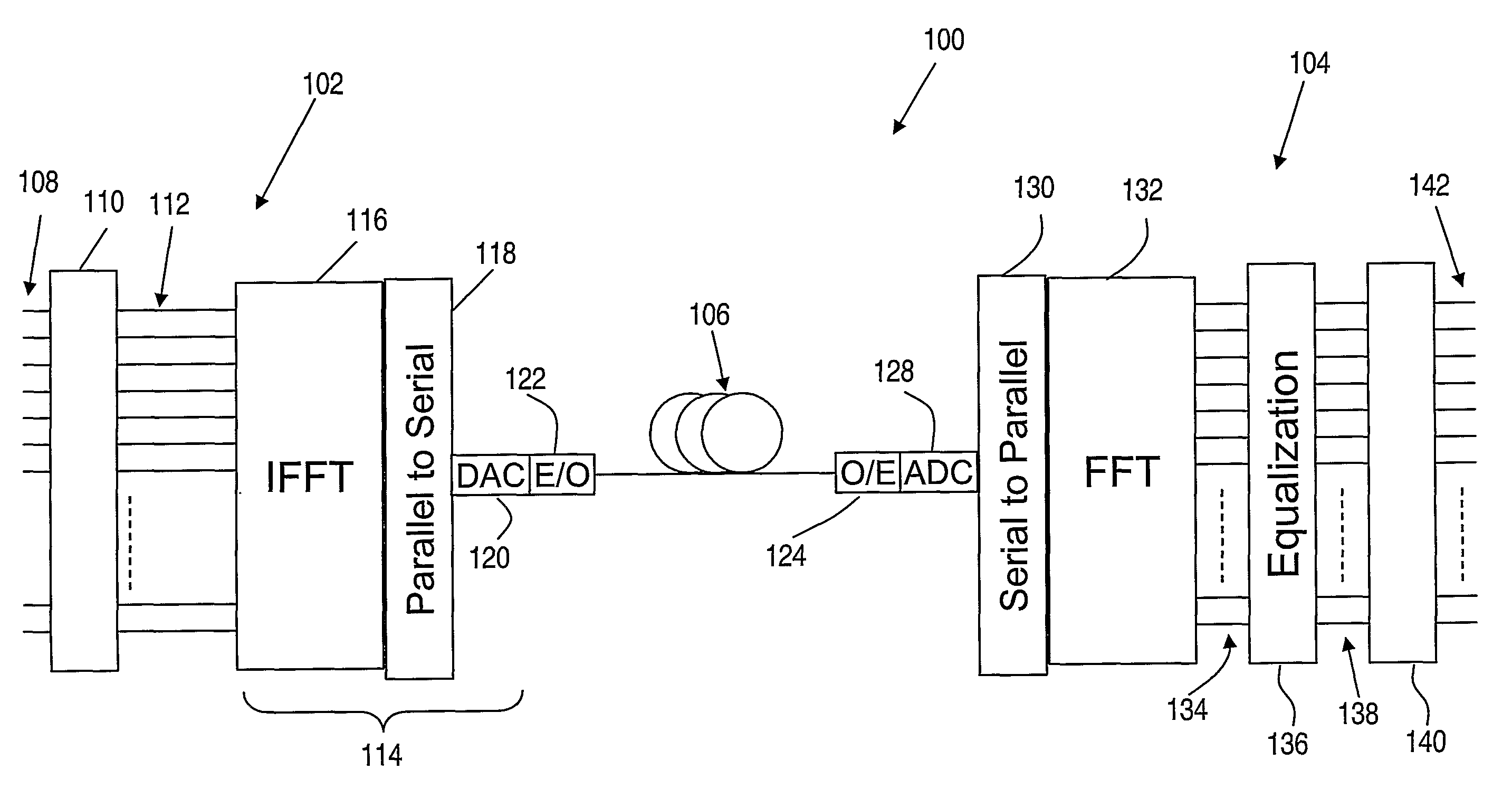Methods and apparatus for optical transmission of digital signals
a digital signal and optical transmission technology, applied in the field of optical communication, can solve the problems of suppression of the amplitude of the signal (or fading) over particular, possible additional signal distortion sources of signals, and introduction of distortion in the transmitted optical signal, so as to reduce the reliance on inherent limitations, and improve the effect of optical power budg
- Summary
- Abstract
- Description
- Claims
- Application Information
AI Technical Summary
Benefits of technology
Problems solved by technology
Method used
Image
Examples
Embodiment Construction
[0078]Turning first to FIG. 1, there is shown schematically a system for communicating digital information over an optical channel according to a preferred embodiment of the present invention. While the invention is exemplified herein by the system 100, which employs orthogonal frequency division multiplexing (OFDM) in encoding and modulating signals for transmission over an optical channel, it is to be understood that the invention is not limited to this particular embodiment. Rather, embodiments of the invention are characterised generally by coding of digital information in blocks, the optional addition of a guard time or cyclic prefix at the transmitter, and equalisation of the received signal in the frequency domain after transmission over the optical channel. While OFDM provides one advantageous means for implementing these functions, the description of preferred embodiments by reference to an OFDM implementation will be understood to be exemplary only, and not limiting of the...
PUM
 Login to View More
Login to View More Abstract
Description
Claims
Application Information
 Login to View More
Login to View More - R&D
- Intellectual Property
- Life Sciences
- Materials
- Tech Scout
- Unparalleled Data Quality
- Higher Quality Content
- 60% Fewer Hallucinations
Browse by: Latest US Patents, China's latest patents, Technical Efficacy Thesaurus, Application Domain, Technology Topic, Popular Technical Reports.
© 2025 PatSnap. All rights reserved.Legal|Privacy policy|Modern Slavery Act Transparency Statement|Sitemap|About US| Contact US: help@patsnap.com



